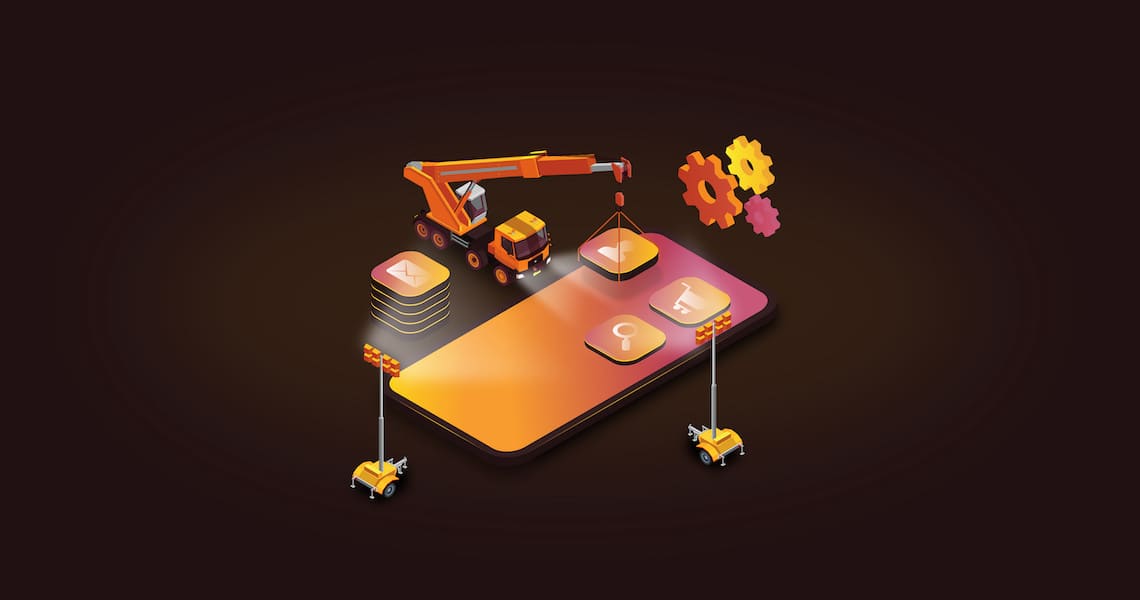
“A Gartner report predicts that no code development will account for 65% of app development activity by 2024”.
We live in a world where things are evolving like never before, and people are always seeking ways to make things easier and faster. In the field of IT, low-code development platforms have been proven to be game changers. If we look 5 years back, no one ever imagined that people will be able to build applications without coding. IT departments used complex coding languages and the processes were lengthy. Fast forward to today, low-code/no-code app development platforms have made it possible for business analysts, office managers, small-company owners, and others who are not software professionals to create and test apps without any coding knowledge.
What is low-code/no-code application development
Low-code/no-code is a software development strategy that involves little to no coding to construct apps and processes. Instead of sophisticated programming languages, you may use visual interfaces with basic logic and drag-and-drop features in a low-code development platform.
“According to the latest reports, almost 60% of the custom apps are now built outside the IT department. Of those, 30% are built by employees with limited or no technical skills.”
Low-code/no-code development platforms have not only benefited those with no coding knowledge but have also proven to be a real game changer for IT professionals. These professional developers can now build applications quickly without having to write code line by line. Low code/no code development platforms are grown enormously in popularity for being quick and easy alternatives to traditional software development.
Features of low-code/no-code app development platforms
Drag-and-Drop Interfaces
Drag-and-Drop Interfaces make it super easy for people with no coding knowledge to build apps according to their needs and requirements. It makes the processes not only quick and easy, but it is also an inexpensive way of bringing idea innovations.
Reusable
The fact that most major functionalities are already pre-built into modules that can be dragged and dropped wherever needed is a significant element of low-code development platforms. That is an important aspect of reusability. It is critical to have an internal “app store” where components, modules, and even whole apps may be reused.
Faster and seamless
Low-code solutions aid developers in accelerating the software development process. Developers no longer need to spend weeks, or even months, working on a single program due to speedier development. As a result, they are free to focus on other projects.
Difference between Low code and No code development platforms
Low code development platforms
A low-code platform is typically used by IT experts with coding experience to construct complicated custom applications, whereas a no-code platform allows business users to create apps without coding to meet their business goals. A low-code framework may be used by technical and “citizen developers” (non-professional development) to create a wide range of applications to meet market growth expectations, streamline procedures, and enable digital transformation. Low-code platforms give developers a flexible and visual environment to create simple to complex graphical applications. This means a low code development platform is primarily used by developers, as little amount of coding is involved in it. These platforms are cost-effective for companies having an existing team of developers.
No code development platforms
On the other hand, back then, creating a web app or establishing a website seemed out of reach for the vast majority of us who lacked coding knowledge. But now it has been made possible, and what was formerly exclusive to developers and individuals with advanced coding skills, is now available to anyone. The no-code movement has removed the barrier of knowing programming languages, allowing anybody to bring their ideas to life. No code app development platforms can be used by business users as these platforms have pre-built templates that can be customized according to the needs.
How Kodika can be a lifesaver in developing mobile apps
Kodika is a leading no-code drag-and-drop platform that allows designers, developers, and non-coders to create distinctive mobile apps without writing code to simplify and accelerate their digitalization. Whether you want to build a food ordering app with accounts, carts, and payments or create a utility and productivity app, there are countless possibilities with Kodika. Customers of Kodika may construct an iOS app without writing any code, making the process of developing mobile apps simpler. Kodika, a blend of both Low-code and No-code development, allows its users to add more actions and code blocks to make their apps more powerful, unique and customized. Through Kodika, developers can use a variety of pre-built systems components to cut the time it takes to develop software in half. No one ever thought that complex applications would be created in hours and that too without having to write any single line of code. Businesses can now experiment with new ideas without spending too much time and money with these Low code/No code app development platforms.
Future of Low code/No code development platforms
According to Gartner, “by 2024, 80% of technology products and services will be created by individuals who are not technology specialists”.
Time is money, and people all around the world are exploring different ideas, testing different ways to do things faster by putting in less effort and spending less money. Having said that, low-code/no-code application development is going to be the next BIG Thing in the IT sector. Today we can say that low-code and no-code platforms can hasten the speed of digital transformation and process automation drastically.
